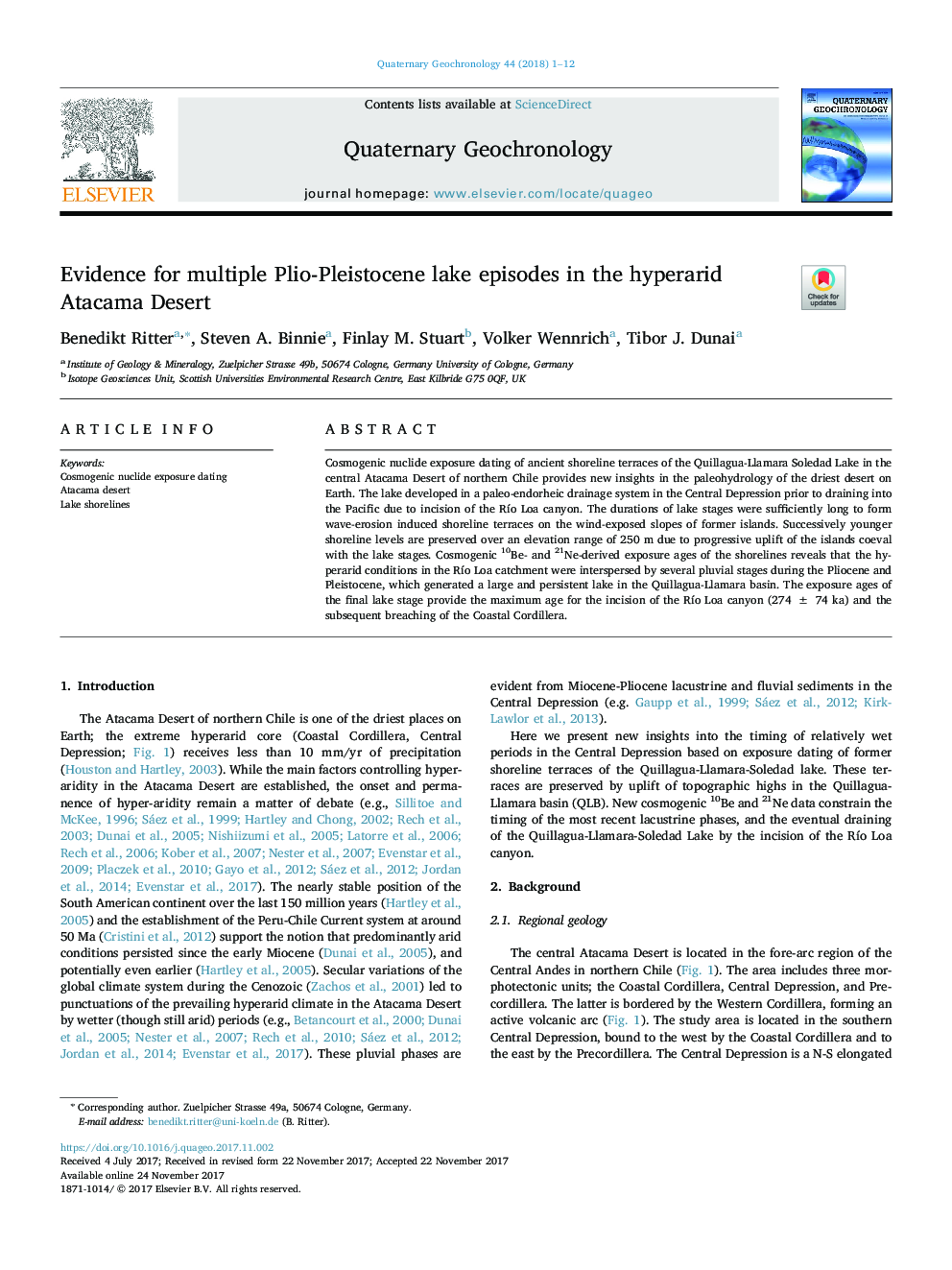| Article ID | Journal | Published Year | Pages | File Type |
|---|---|---|---|---|
| 8912823 | Quaternary Geochronology | 2018 | 12 Pages |
Abstract
Cosmogenic nuclide exposure dating of ancient shoreline terraces of the Quillagua-Llamara Soledad Lake in the central Atacama Desert of northern Chile provides new insights in the paleohydrology of the driest desert on Earth. The lake developed in a paleo-endorheic drainage system in the Central Depression prior to draining into the Pacific due to incision of the RÃo Loa canyon. The durations of lake stages were sufficiently long to form wave-erosion induced shoreline terraces on the wind-exposed slopes of former islands. Successively younger shoreline levels are preserved over an elevation range of 250 m due to progressive uplift of the islands coeval with the lake stages. Cosmogenic 10Be- and 21Ne-derived exposure ages of the shorelines reveals that the hyperarid conditions in the RÃo Loa catchment were interspersed by several pluvial stages during the Pliocene and Pleistocene, which generated a large and persistent lake in the Quillagua-Llamara basin. The exposure ages of the final lake stage provide the maximum age for the incision of the RÃo Loa canyon (274 ± 74 ka) and the subsequent breaching of the Coastal Cordillera.
Related Topics
Physical Sciences and Engineering
Earth and Planetary Sciences
Geochemistry and Petrology
Authors
Benedikt Ritter, Steven A. Binnie, Finlay M. Stuart, Volker Wennrich, Tibor J. Dunai,
